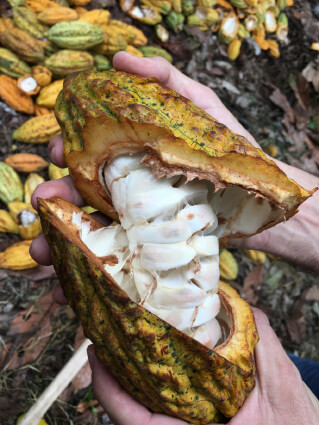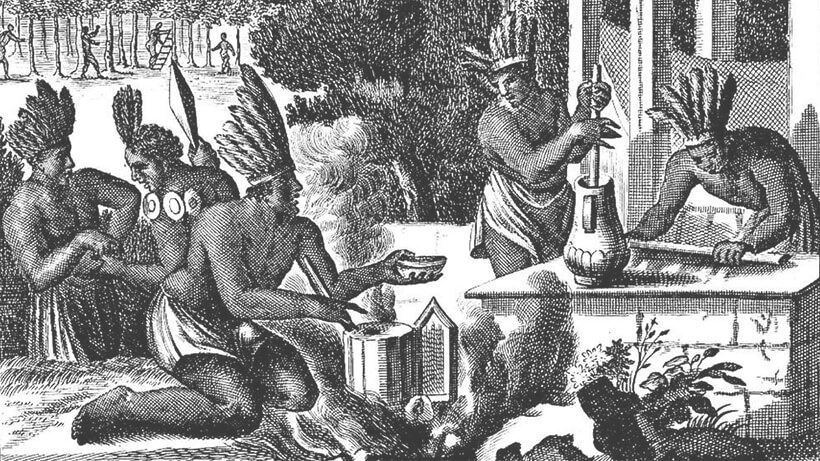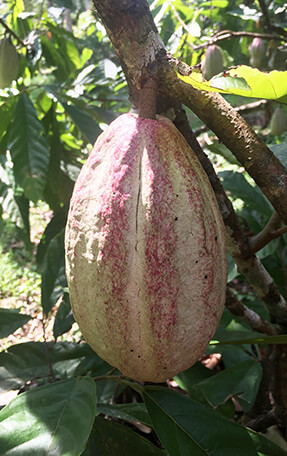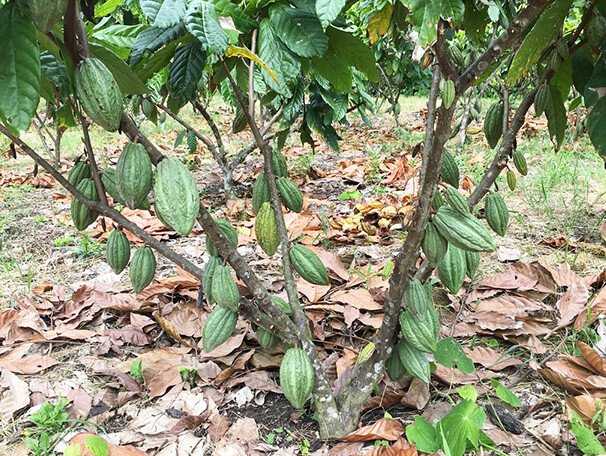Cacao
While the word «chocolate» comes from Mexico where the Aztecs called it «chocolatl,» the cocoa tree itself comes from the High Equatorial Amazon Forest (1000 m altitude).
An international team of archaeologists, anthropologists, biochemists and geneticists has just discovered, for the first time, archaeological traces of cocoa beans dating from 5300 years ago (3300 B.C.) found in ancient Equatorial Amazon ceramics. This is the oldest use of cocoa attested thus far. It precedes by 1500 years the dissemination of cocoa by the Olmecs and Mayans in Central America.
This evidence was found in the South of Equatorial Amazonia, at the Santa Ana-La Florida (SALF) archaeological site located in Palanda and uncovered 16 years ago by the archaeologist Francisco Valdes and his French-Ecuadorian team (IRD/INPC).


Drawing of Mayans preparing the virtuous chocolate drink.
The «Mayo Chinchipe», who constitute the oldest Amerindian civilisation of Upper Amazonia discovered thus far, have used cocoa continually since that time. Remnants of houses and a ceremonial site are found there. (Sources Cirad).
These findings were just published on the website of the American journal «Nature Ecology & Evolution».
The cocoa tree, which is endemic to the equatorial forests in the Amazon basin, was discovered by the Indians more than 5000 years ago. They gradually acclimated it, cultivated it and spread it throughout the country and beyond. It was in Mexico that the Conquistadors discovered it in turn and then popularised it so that it was adopted at the court of the King of Spain and then of Louis XIII, through his marriage to the Infanta of Spain, Anne of Austria.
Its passage through all of the courts of Europe and especially Versailles made cocoa the fashionable drink of the entire aristocracy.

Cocoa, which came from the Upper Amazon, travelled down to the coast by the Guayas River and was called the Cacao de Arriba (cocoa from above), Fino de Aroma or Cacao Nacional. It was the cocoa of the oldest origins which was drunk by people. At the beginning of the 20th century, Ecuador was the number one world producer of this «Fino de Aroma» variety. But diseases, economic crises, and competition from African countries all led to the decline of this production and the producers turned towards a hybrid which was more productive and less sensitive to plant disease: CCN 51.
Pierre-Yves Comte made the rigorous choice to plant only the origin cocoa, i.e. the «Cacao nacional, Fino de Aroma» at the Hacienda Eleonor, in the province of Esmeraldas.

Cocoa tree in production.


